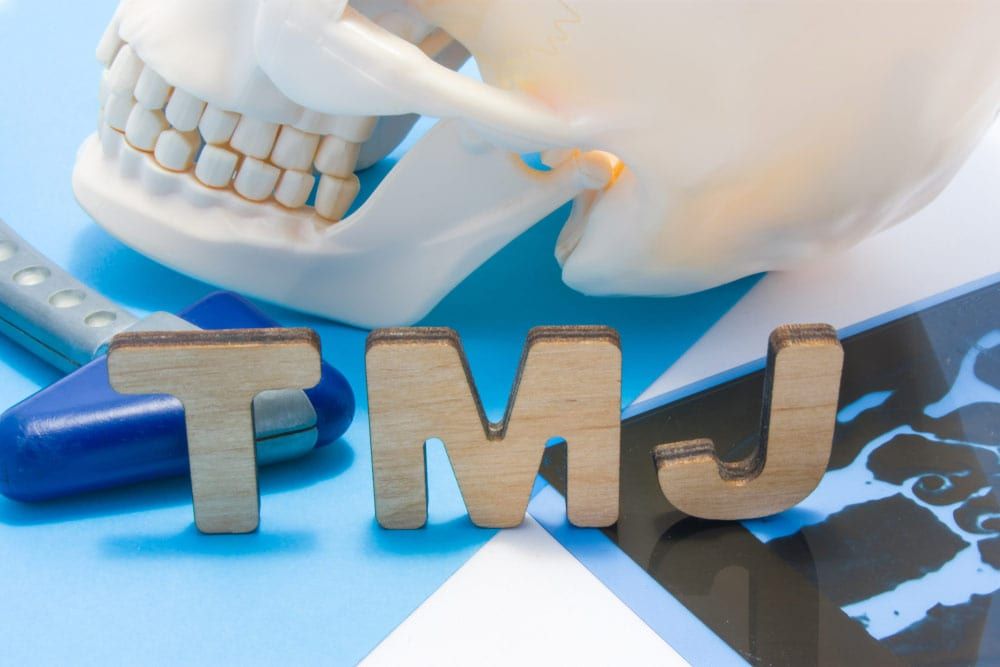There are multiple factors that can contribute to the development of TMJ disorders, including acute trauma, continuous trauma and systemic conditions. are not sure of the exact cause of TMJ or TMD, but it’s believed to stem from problems with the muscles or other components of these joints. A traumatic injury can lead to temporomandibular joint disorder, as can arthritis.
What is TMJ/TMD?
Temporomandibular joint disorder (TMJ/TMD) is a condition that affects the joint connecting your lower jaw to your skull. You have two temporomandibular joints, one on each side of your face. This joint is essential in speaking, eating, and yawning.
Your temporomandibular joint consists of bones, muscles, blood vessels, nerves, and connective tissue. Problems with these components can create issues with proper joint function.
How do I know if I have TMJ?
Symptoms of TMJ can occur on one or both sides of your face. They can be temporary or can last for months or even years. Some men and women experience only mild symptoms, while others find their symptoms to be unbearable.
Some things to keep an eye out for include:
- Pain or sensation of tenderness in your jaw, face, ear, neck, or shoulder
- Increase in discomfort when you speak, chew, or yawn
- Inability to open your mouth wide or move your jaw from side to side
- Tired feeling in your face
- Difficulty chewing or a sudden change in your bite
- Swelling on one side of your face
- Ringing in your ears
- Popping, clicking, or grating sounds when you open or close your mouth
- Jaws that become stuck in an open or closed position
Don’t ignore changes or discomfort in your jaw. These are joints that play essential roles in daily life, and TMJ can disrupt your normal routines.
What causes TMJ or TMD?
Researchers are not sure of the exact cause of TMJ or TMD, but it’s believed to stem from problems with the muscles or other components of these joints. A traumatic injury can lead to temporomandibular joint disorder, as can arthritis.
Additional causal factors include high levels of stress, grinding or clenching your teeth, and movement of the disc that cushions the connection of the ball and socket of the joint. Sleep apnea or other breathing disorders can contribute to TMJ by causing you to move your jaw forward when breathing is interrupted during sleep. This motion might help open your airway, but it also causes your teeth to grind, placing undue stress on your temporomandibular joint.
How is temporomandibular joint disorder treated?
The first step is a thorough diagnostic exam. We collect digital imaging of your teeth and bite, and X-ray imaging to visualize the bones of your temporomandibular joints. An in-depth discussion of your symptoms, general health history, and lifestyle habits follows.
This information helps Dr. Keller craft a customized treatment plan. In some cases, modifying behaviors can yield impressive improvements. Finding ways to manage stress, changing your diet, incorporating jaw stretches, or even changing the way you hold your phone can all help.
A therapy called transcutaneous electrical nerve stimulation (TENS) can be a wonderful option for treating TMJ. This approach uses electrodes to deliver electrical current to the muscles in your jaw, stimulating them, and releasing tension that can contribute to TMJ.
Joint injections, ultrasound therapy, and medications can also help. In cases where posture is contributing to the problem, Dr. Keller can collaborate with a chiropractor to help you find lasting relief.
An oral orthotic appliance can also go a long way toward treating temporomandibular joint disorder. These devices are worn in your mouth and prevent you from clenching your jaw or grinding your teeth. Your treatment plan may include a recommendation for you to wear your orthotic device only while asleep, only during waking hours, or a combination of both.
The Dental Sleep Center at Keller Dentistry offers a variety of dental orthotic appliances that are comfortable to wear and allow for a custom fit. These devices may help in reducing grinding and clenching. Together with thermal therapy and jaw exercises, the oral device can help relax the muscles and joint.




